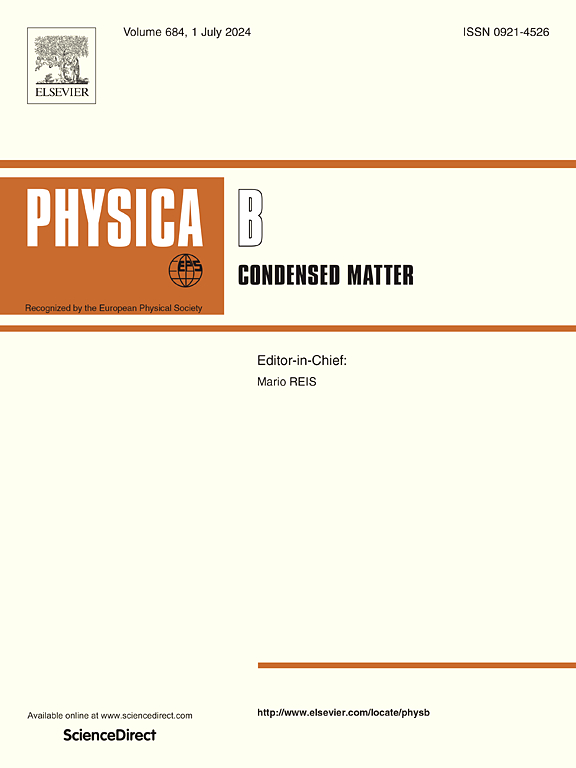Generalized-stacking-fault energy of sphalerite structure GaN: A first principles calculation
IF 2.8
3区 物理与天体物理
Q2 PHYSICS, CONDENSED MATTER
引用次数: 0
Abstract
As a third-generation semiconductor material, GaN has wide bandgap, strong atomic bonds, and other properties, so its research and application is currently the frontier and hot spot of global semiconductor research. In the process of preparing GaN, it is inevitably accompanied by a large number of crystal defects, and stacking fault is one of the surface defects. The energy absorbed or released during the generation of stacking fault is called the generalized-stacking-fault energy. In this work, using first-principles calculation, we systematically explored the generalized stacking fault energies and their variation with the slip distance when three different planes of sphalerite GaN slip in different directions. The results indicate that the (111) plane as a close-packed plane, its slippage is more likely to occur than the other two planes. On the (111) plane, the difficulty of slipping in the <01 > and < 10> directions is the same, and it is easier to slip than in the < 11> direction. On the (100) plane, it is easier to slip in the < 01> direction compared to the <001> and < 00> directions. On the (110) plane, the < > direction is the easiest to slip, and the <11 > direction is the hardest to slip. < 11>(111) is easier to decompose than <11 >(110). The results can help to optimize the material properties and avoid formulating of stacking faults in the growth, processing, and heat treatment of GaN crystals.
闪锌矿结构GaN的广义叠合断层能第一性原理计算
氮化镓作为第三代半导体材料,具有带隙宽、原子键强等特性,其研究与应用是目前全球半导体研究的前沿和热点。在GaN的制备过程中,不可避免地伴随着大量的晶体缺陷,而层错就是表面缺陷之一。在层错产生过程中所吸收或释放的能量称为广义层错能。本文采用第一性原理计算方法,系统地探讨了闪锌矿氮化镓三种不同面不同方向滑动时的广义层错能及其随滑动距离的变化规律。结果表明,(111)平面作为密排平面,其滑移率高于其他两种平面。在(111)平面上,滑动的难度在<;01 >;和<;1 * 10>;方向是一样的,而且比在<;2 >;方向。在(100)平面上,更容易在<;1 >;方向与<;001>;和<;1 >;的方向。在(110)平面上,<011;方向是最容易滑倒的,而<;111 >;方向是最难滑倒的。& lt;2 - 11>(111)比<;11 - 1(110)更容易分解。研究结果有助于优化材料性能,避免在GaN晶体的生长、加工和热处理过程中形成层错。
本文章由计算机程序翻译,如有差异,请以英文原文为准。
求助全文
约1分钟内获得全文
求助全文
来源期刊

Physica B-condensed Matter
物理-物理:凝聚态物理
CiteScore
4.90
自引率
7.10%
发文量
703
审稿时长
44 days
期刊介绍:
Physica B: Condensed Matter comprises all condensed matter and material physics that involve theoretical, computational and experimental work.
Papers should contain further developments and a proper discussion on the physics of experimental or theoretical results in one of the following areas:
-Magnetism
-Materials physics
-Nanostructures and nanomaterials
-Optics and optical materials
-Quantum materials
-Semiconductors
-Strongly correlated systems
-Superconductivity
-Surfaces and interfaces
 求助内容:
求助内容: 应助结果提醒方式:
应助结果提醒方式:


